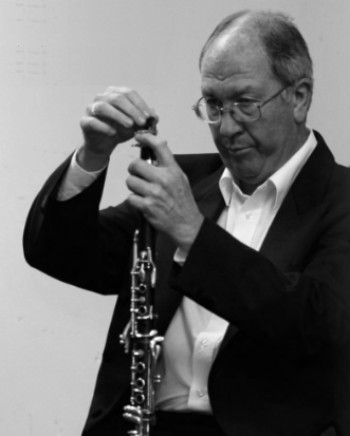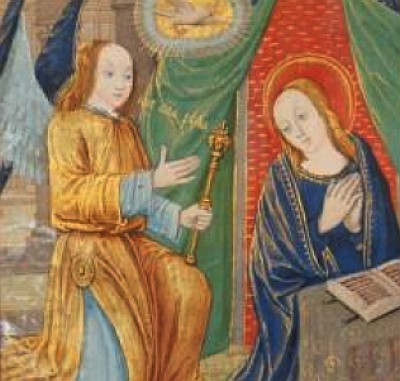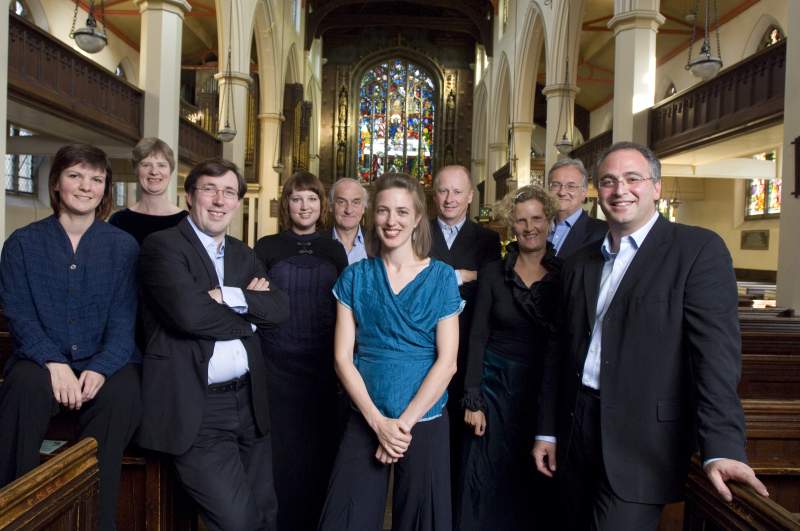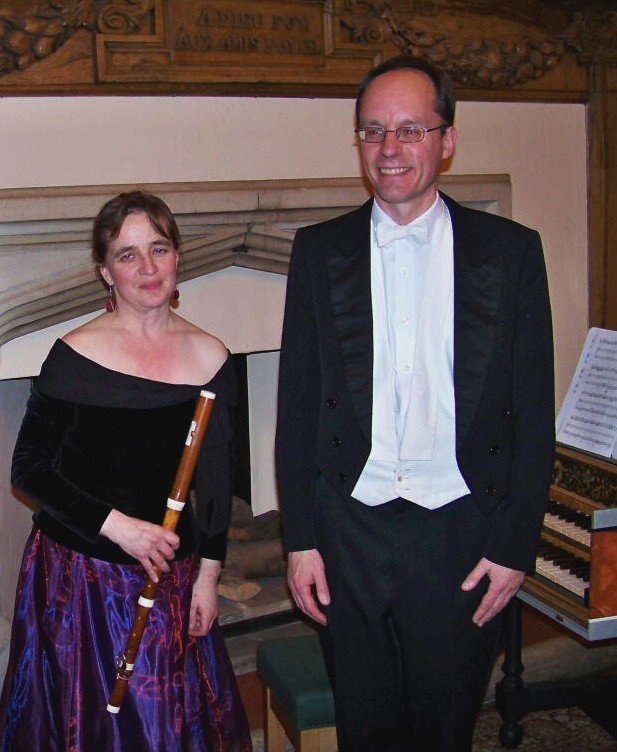 W
W hat a remarkable performance Rachel Brown (baroque flute) and Terence Charlston (harpsichord) gave last Friday, in the
Parry Rooms at the Royal College of Music in London!
- Sonata in G major, No. 272 - Presto mà fiero
- Sonata in B major, No. 267 - Larghetto
- Sonata in A major, No. 274 - Grazioso mà vivace
- Sonata in D major, No. 277 - Allegro assai
- Sonata in G minor, No. 366 - Affettuoso, mà mesto; Allegro di molto, mà fiero
- Sonata in B-flat major, No. 272 - Allegro di molto; Affettuoso; Vivace
- Sonata in C minor, No. 276 - Cantabile
- Sonata in F major, No. 356 - Larghetto, mà arioso; Allegro di molto
- Sonata in G minor, No. 265 - Con affetto, mà non troppo lento
T he occasion for the performance was the launch of the publication of the first two volumes of Quantz flute sonatas that Rachel has edited. Brown’s edition of Quantz Sonatas, bringing these works to the public for the first time, is available by subscription, either to one volume or both, by emailing her at info@uppernote.com.
T his is a marketing approach similar to that used in the 18th Century. For example, Brown notes that Telemann’s Paris Quartets listed among its subscribers not only several members of the French aristocracy, such renowned players as Blavet, Guignon, Edouard, and composers, notably de Caix d'Hervelois, Charpentier, Mondonville, Fasch, Pisendel but also a ‘J.S. Bach of Leipzig’.
V olume 1 contains 6 sonatas (F major No. 272; G major No. 273; A major No. 274; B-flat major No. 275; C minor No. 276; D major No. 277) as does Vol. 2 (B minor No. 231; B minor No. 267; G minor No. 336; E-flat major No. 348; A major No. 351; F major No. 356). These are selected by Brown from the more than 300 flute sonatas that Quantz composed, almost none of which have been previously published.
Q uantz’s book ‘On Playing the Flute’ is still one of the most-consulted books on flute technic, which makes it especially odd that virtually none of Quantz’s many compositions were actually published. Almost everything that was written by Quantz for King Frederick of Prussia remained in the court’s private possession, and then in the Stadtsbibliothek in Berlin, for more than 200 years. So I went to the library in Berlin to have a look. I would arrive in the morning when they opened at 9 a.m. and take a quarter-hour lunch and leave when they closed at 7 p.m. The librarians were wonderful; they broke almost every rule to help me—they were so delighted that someone was taking an interest in these things. It turns out that there are more than 300 Quantz concerti and about 400 sonatas, hardly any of which have been published.”
— Rachel Brown, remarks between Quantz sonatas, 19-NOV-2010.
T he design of these Volumes is unique in several ways. Firstly, for the sonatas that have a ‘bass’ (cello) part as well as flute and harpsichord, the flute and bass parts appear on linked staff-systems together—so that both players can continuously see what the other is doing, with the obvious advantages that this entails for fluid, mutually-responsive performance.
I t is crucial, I think, to have the flute and the cello (bass) parts together on the page—to have the cello able to see where the dialogue with the flute is going and, from that, to be better able to choose appropriate phrasing and ornamentation.”
— Rachel Brown, remarks between Quantz sonatas, 19-NOV-2010.
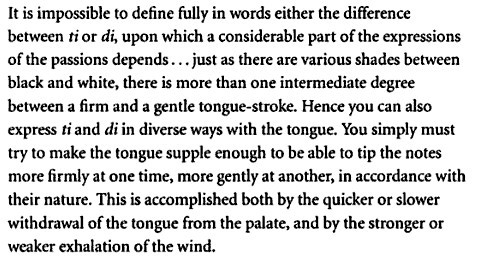
T onguing, for Quantz, was not just simple ‘tuh’ or ‘duh’. Instead, tonguing involved a whole range of syllables and shades—tiree, tä, diddle-diddle—all sorts of articulations that could alter the sound and reveal different qualities of expression. The expressive range he covered is really quite marvelous—something that takes years to fathom, really.”
— Rachel Brown, remarks between Quantz sonatas, 19-NOV-2010.
R achel expressed deep thanks to Terence Charlston for his skill and devotion in preparing right-hand parts where Quantz only provided left-hand continuo. In all, Terry had to compose about 120 minutes of right-hand harpsichord score, for the multiple movements of the 12 sonatas in these two volumes.
R achel also expressed gratitude to Jackie Lee, whose Finale©/Sibelius© copyist/pre-press expertise produced the publication-ready digital files. Rachel’s specification and Jackie’s layout involve fold-out pages so as to prevent any awkward page-turns for the performers. This is a second unique/novel aspect of the design of the 2-Volume publication.
T he acoustics in the intimate, modest-size Parry Rooms on the 4th floor at RCM were ideal for the baroque flute-harpsichord duo. Filled to capacity with more than 120 people eager to hear these works, the rooms with their irregular wall and ceiling contours and the warm yellow-pine ceiling and paneling served to reflect the sound in such a way that most everyone had a good vantage point for hearing the performance. (We were grateful for Rachel's consideration in getting everybody who was in Parry 1 moved into Parry 2 just before the performance began!)
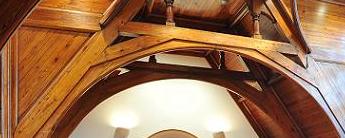 B
B rown explained at length the merits of various alternate fingerings that the Quantz design affords. Her blazing 32nd notes in the bravura first movements of the pieces, though, are pretty incredible, regardless how well-engineered and forgiving a particular instrument may be. It is hard for most of us to imagine executing these fast passages on a modern Boehm design instrument with anything approaching the fluency and consistency of tone that Brown achieves on an early flute! What prodigious ability she has!
W e were similarly thrilled by Charlston’s finely-nuanced harpsichord performance. The gracefulness of his accomodation of accelerando and ritardando decisions initiated by Brown was magnificent; the ornaments Charlston applied embodied a fresh spontaneity that responded attentively to Brown’s gestures but never ‘competed’ with them. Really exciting ‘collaborative keyboard’ at its best!
O ne of Quantz’s strengths was rhetorical ‘delivery’... all of the gestures with tonguing and breathing... He believed that every musician should play like an accomplished orator speaks: clarity and conviction should ring out from every declaration that you make as a musician. Above all else, you must be an orator.”
— Rachel Brown, remarks between Quantz sonatas, 19-NOV-2010.
A n especially endearing and comment-worthy aspect of the evening were Rachel’s remarks between the pieces that she and Terry played. She covered an amazing gamut of topics, ranging from instrument design, to ornamentation and historically-informed performance practice, to flute-playing technic, to composition methods, to Prussian history, to anecdotes on parent-child relationships and the plight of kids whose natures are ‘different’ than their parents would prefer. Seldom have we had so much fun as we did on Friday night. Immediately bought all of Rachel’s Quantz CDs on-offer, to take them home and get better acquainted with this previously-private-now-public Quantz passion. Judging by the qualities she displayed during the Friday night performance at RCM, Rachel must be one hell of a teacher! Bravo!
E very day, Quantz was defending and protecting his reputation... It is interesting to read other people’s accounts of him... In his own writings, filled with quotidian bits and pieces, he will often tell you, for example, how much he paid for a thing, as though it were important to him to demonstrate or prove his shrewdness. He was orphaned at a young age and was taken under the wing of a local musician... In his teens, Quantz concentrated on oboe and violin; only later did he come to concentrate on flute. It is underappreciated how much of a musical jack-of-all-trades he was—how resilient.”
— Rachel Brown, remarks between Quantz sonatas, 19-NOV-2010.
H e gave flute lessons, secretly, to Prince Frederick—before Frederick’s father, the King, died. The father’s disapproval of music, and especially of flute, was absolute; he considered it far too effeminate, inadequate as a representation of Prussian militarism, and incompatible with the important priorities that Frederick must have in his training to become King one day. There was one episode during one of Quantz’s lessons when one of Frederick’s servants reported that the father was approaching the part of the palace where the secret flute lessons room was located. Quantz and the flutes and the music and the music stands were shoved into an armoire. The father arrived and found Frederick alone, studying some book of military strategy, but, because Frederick’s hair was still done-up in the French style, he knew something was ‘up’. The father searched the area for more than an hour, but never found Quantz in the armoire. Quantz, though, subsequently referred to the incident as ‘being cooked’—because the armoire was so cramped and hot while he was confined in there.”
— Rachel Brown, remarks between Quantz sonatas, 19-NOV-2010.
A t one point, Frederick tried to escape, with the help of a servant. The two did not get far. The father arrested them and subsequently had them tried for high treason. Frederick was imprisoned for a year, and his father forced the young Frederick to witness the execution of the servant.”
— Rachel Brown, remarks between Quantz sonatas, 19-NOV-2010.
Q uantz did marry, you know. It was under, shall we say, ‘intriguing’ circumstances. He went to visit the widow of one of his friends who had recently died. The woman was ill; bedridden; in fact, the priest had been called to administer the last rites to her. And, with the priest there, the woman was asked if there was anything she most desired before she departed this life. And she replied that her dying wish was to be married to the great Quantz. So Quantz agreed and the priest conducted the ceremony on the spot. After which the woman sprang from her bed, said she felt very much better now, and thanked everyone for coming. This was when Quantz’s annual income was more than 2,000 talers, more than 10 times that of C.P.E. Bach...”
— Rachel Brown, remarks between Quantz sonatas, 19-NOV-2010.
T his particular flute is a boxwood one that I was able to buy from Carl Hanson in Yorkshire before he retired. It is a 2-key design after Quantz—the two keys are E-flat, which is a few cents higher in pitch, and D-sharp, which is a few cents lower in pitch [than would be the case in equal-temperament]. The difference is very useful, depending on which key a piece is written in. Rudolf Tutz in Innsbruck also made me two flutes of Quantz-type design, one of ebony and one of boxwood—these woods have substantially different tone qualities, both very good. The bore of Quantz flutes is considerably larger, especially in the headjoint, compared to other baroque flutes. The sound is darker and richer in the lower register and yet they are brilliant in the upper register...”
— Rachel Brown, remarks between Quantz sonatas, 19-NOV-2010.
T hese titles or designations for pieces became more and more florid, you know... this ‘Allegro di molto, mà fiero’, ‘this way, but not too much so’, and so on. In fact, as we enter the Classical period, you can tell that people were finding it to be over-the-top. Mozart, for example, entitled one of the movements in his Quartet in A major KV-298 ‘Allegro grazioso, mà non troppo presto, però non troppo adagio, così-così-con molto garbo ed espressione’, mocking the excessiveness of the practice of a generation or two earlier.”
— Rachel Brown, remarks between Quantz sonatas, 19-NOV-2010.

M odern editorial markings can so easily obscure the composer's intentions. Unhelpful editions of baroque music are readily recognisable: if a copy of a baroque sonata designates ‘piano accompaniment’; if the left-hand keyboard part has no figured bass; if there is no separate bass part for a cellist or viol player; if there are metronome marks...”
— Rachel Brown, The Early Flute.
















